Introduction
White gold or silver offers timeless, elegant alternatives to other precious metals like yellow gold. Both white gold and silver are bright, cool-toned metals with a white caste.
Although white gold and silver look similar, they have several distinct qualities, such as durability, cost, maintenance, and subtleties in their color.
The Purpose of this blog is to inform our audience, about the key differences between gold and silver and their composition, characteristics, affordability, care, and maintenance.
What is white gold?
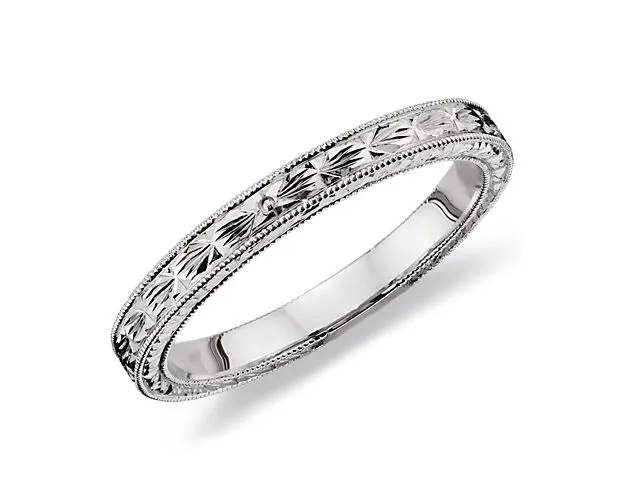
White gold was originally developed to imitate platinum. It is usually an alloy containing about 75% gold and 25% nickel and zinc.
If stamped at 18 karats, it would be 75% pure gold and is considered a high purity level and a popular jewelry option for many people.
It is a metal that exists in its own right. In other words, you cannot mine white gold like yellow gold. This is because white gold is an alloy of gold.
Some characteristics of white gold are as follows
Appearance- White gold has a classic, elegant silvery-white appearance, sometimes with a faint yellow tint. Rhodium plating gives the ring a beautiful reflective shine and resistance to scratches. Without this plating, white gold will have a yellow undertone.
Price- It is pricey but less expensive than platinum. It acts as an investment if you have a high budget and want fine-quality material.
Durability- if we take proper care, it can be a very durable metal. It is more resistant to small scratches when compared to platinum. White gold is a better option when it comes to more intricate jewelry designs.
Allergic property- They are plated in rhodium, which prevents direct contact between nickel and skin. One in eight people is sensitive to nickel-containing alloys.
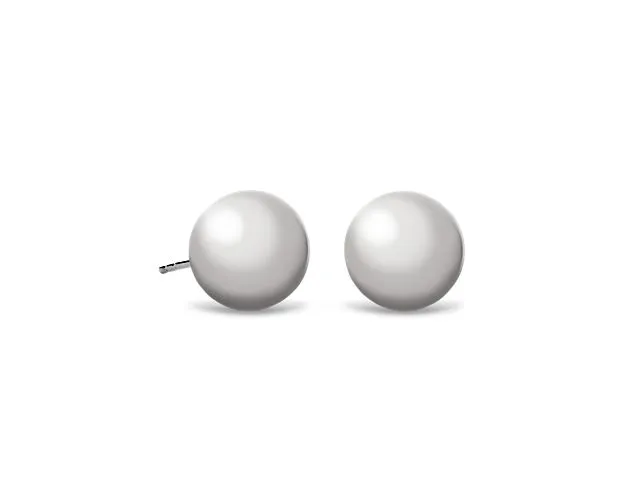
Care and maintenance- As we know, white gold is plated with rhodium, even though rhodium plating itself won’t last forever. After some years, your piece will require a re-application of rhodium by a professional jeweler.
Advantages of white gold
- They are more durable than silver and sterling silver. It’s also more scratch-resistant and more malleable than platinum.
- It is malleable, so it’s easy to work into intricate designs. They also pair well with any stone.
- Compared to platinum and palladium, white gold is less expensive.
- It is a precious metal prepared from pure gold and has the same appearance as platinum or silver.
- Its silvery appearance makes it preferable over yellow gold.
- The neutral color of this metal is perfect for setting gemstones of different colors and shapes.
Disadvantages of white gold
- It requires re-coating to maintain its silvery-white color
- It is not hypoallergenic.
What is Silver?
Silver, in its purest form, is soft and malleable. It is an element of the periodic table. Its chemical symbol is Ag. It is also known as “fine silver” or “999 silver.”
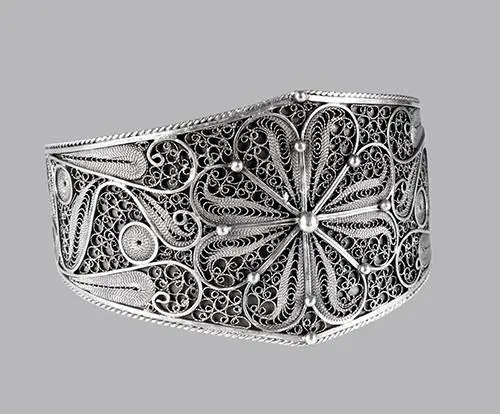
It is a symbol of love. Some believe it is used to calm, heal, and balance the effects of silver.
They are also used to make decorative and ceremonial objects such as jewelry, ornaments, and religious cult figurines, as well as practical items such as tableware.
Different alloys of Silver
Fine silver/ 0.999 silver- The label 0.999 shows 99.9% purity. The remaining 0.1% is made from trace elements. It is better for pendants and earrings than bumping and scratching rings or bracelets.
Sterling silver/0.925 silver- Its label 0.925, shows 92.5% silver by weight. The remaining 7.5% have no stipulations. Apart from jewelry, they also made tableware and other home items, containers, office supplies, and even medical tools. It is more durable and more challenging than fine silver.
Coin silver- It is composed of 900 or 90% silver and 10% copper, which was historically used in the production of United States silver coins. It is less pure than fine silver and is more prone to tarnishing.
Argentium silver/Non tarnishing alloys- These alloys consist of at least 92.5% silver. The remaining are copper and some elements of germanium. It is more expensive, stronger, whiter, and easier to weld.
Silver plated- It is made by coating a base metal with silver and is less durable, leading to discoloration and tarnishing.
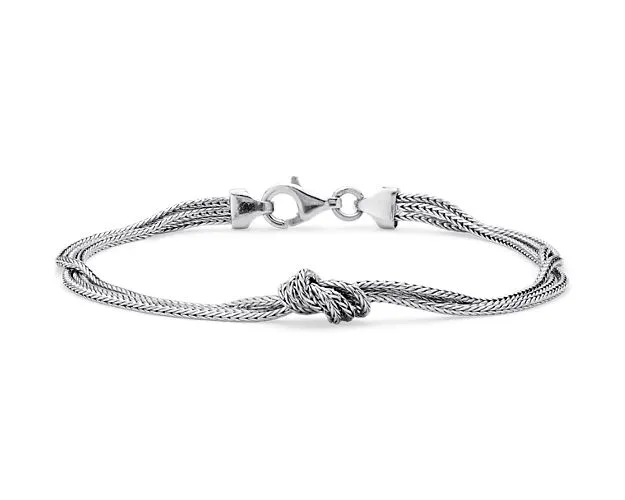
Advantages of silver
- Consists of antimicrobial properties. It may help to prevent infections.
- It may help in reducing swelling, redness, and discomfort associated with certain medical conditions.
- Silver can deflect negative energy and protect to wearer from negative influences.
- Used to apply pressure at ear points, wrist points, and neck points, which helps to relieve pain, promote healing, and improve overall health and wellness.
- It has various industrial applications like electronics, solar panels, and medical devices.
Disadvantages of silver
- It tarnishes easily.
- High-maintenance jewelry.
White Gold Vs Silver: Key Differences
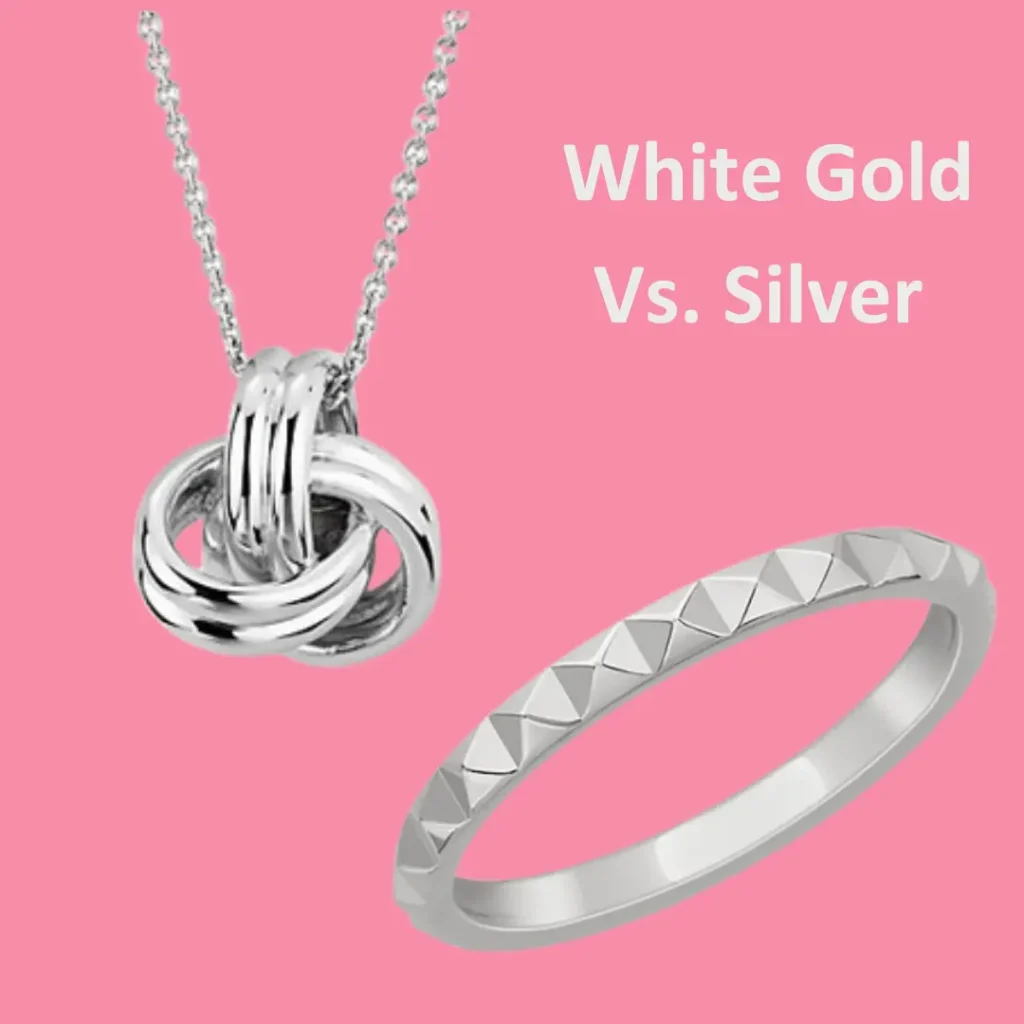
| Features | White gold | Silver |
| Durability | More durable | Less durable |
| Tarnish | Doesn’t tarnish | Easily tarnish |
| Color | Brighter | Grayish white hue |
| Affordability | Less affordable, more expensive | More affordable, less expensive |
| Allergy | It is allergic | It is hypoallergic |
| Care and maintenance | Less care and maintenance are required. | High care and maintenance are required. |
Conclusion
Not really. It depends on what you’re looking for. Yes, silver is more affordable than white gold, but it ranks lower on the durability scale and requires more care and maintenance to keep it looking its best.
On the other hand, white gold can cause allergies in people who are sensitive to certain metals, whereas silver is usually hypoallergenic- unless it is unknowingly mixed with an incompatible alloy such as nickel.
All in all, silver could be the best choice if allergies are a problem for you. It depends not only on your lifestyle and personal preferences but also on how much you want to spend. For both white gold and silver, there are options for every budget, and both are beautiful, timeless choices.
